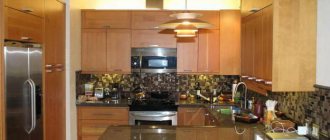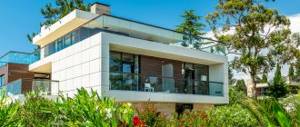Large companies offering services and goods cannot do without special premises for storing and using products. They are tired of sharing personal space with other companies. Therefore, they are looking for free places where they can work. This has its own name - production premises.
What are production facilities
Such complexes represent a territory (enclosed spaces) in specially designed buildings, for example, workshops. Or, conversely, separate areas in the open air. They are mainly used for storage of industrial goods by industrial enterprises, wholesalers, importers and exporters, transport enterprises, customs and others. Also, not only placement is possible there, but also partial processing, manufacturing, and control.
It is worth noting that in production facilities the work of employees is highly developed, which is assisted by highly developed mechanization.
Minimizing costs when organizing production and office premises
Providing the necessary technical and operational characteristics of production premises within the framework of prefabricated industrial buildings can significantly reduce the cost of construction of facilities. The list of advantages of such structures includes the following:
- Prompt construction of a facility in a new location
- The cost of the foundation for a lightweight prefabricated building made of metal structures and sandwich panels is noticeably lower than for a permanent heavy building. Therefore, for the workshop it is enough to provide a pile or strip foundation with minimal costs
- If necessary, such a workshop can be dismantled and reassembled in a new location, which makes the building almost completely liquid, with the exception of the costs of arranging a new foundation. This is relevant not only when transferring production to a new location due to changes in demand, place of supply of raw materials and other factors, but also when changing land rent, which is a very common factor in reducing the profitability of production
- The characteristics of industrial premises in prefabricated buildings are not inferior to permanent buildings, while their cost is several times lower, as are the time costs for construction and commissioning. Reducing construction time allows you to start production faster, significantly reducing the time it takes to reach the break-even point - the enterprise will begin to make a profit faster, all other things being equal.
( 1 ratings, average: 5.00 out of 5)
Types of production premises
The types of industrial warehouses depend on the materials or wastes that need to be handled. They should be separated by weight, volume and type (for example, wood, metal, flammable, fireproof and liquid).
There are also several additional factors that determine the type of warehouse:
- by air temperature;
- on the heating and cooling system;
- on ventilation;
- on air conditioning;
- on energy saving.
Varieties of industrial premises require a special approach in the form of their own security system and special equipment.
Features of the organization of production and storage facilities
As for the parameters of the production premises, it is worth considering all the characteristics:
- Frame, cladding, internal load-bearing structures - the materials used must meet the requirements determined by the specific production. The selection of such elements is always carried out in accordance with the standards of existing production, and their replacement requires large material costs, the service life is up to 75 years
- All internal systems, including ventilation and air conditioning, fire alarm system, water supply, gas supply, heating - the average service life of such communications varies between 2-5 years
- Interior finishing - this category includes both finishing materials and heat and sound insulation, partitions, furniture, fittings, equipment, telecommunications, etc.
Divisions in production premises
Production facilities are divided into several departments, depending on their purpose:
- Production premises as a working area (factory workshops or specially designated areas);
- Warehouses – a place for storing equipment, raw materials, finished products;
- Administrative premises - the workplace of managers or special offices intended for special meetings, negotiations, meetings;
- Premises for medical purposes - a workplace for medical staff, or rooms for providing the necessary assistance;
- Premises for metal processing, production of explosive substances and work with materials from the light industry.
Production premises, their characteristics and equipment
Page 1 of 2Next ⇒
Requirements for the design of premises of public catering establishments.
Types of premises
The premises of public catering establishments, depending on its type, capacity, nature of production and form of service, are combined into functional groups (FG). At catering establishments that use raw materials, all premises are combined into the following FGs: - for receiving and storing products; —for mechanical culinary processing of raw materials and production of culinary semi-finished products; — for the production of culinary and confectionery products; — for consumers; - official; —household; —technical.
Warehouses, their characteristics and equipment
1.1 In the warehouses of public catering enterprises, short-term storage of raw materials and semi-finished culinary products necessary for the operation of the enterprise, as well as items of material and technical equipment and waste, is carried out. They include: — refrigerated chambers for storing frozen meat; — refrigerated chambers for storing chilled meat, poultry and offal; — refrigerated chambers for storing fish (if the enterprise operates on raw materials); —camera for dairy and fat products and gastronomy; —chamber of vegetables, fruits, drinks, pickles and herbs; —food waste chamber; —potato and vegetable pantry; — dry food pantry; — pantry containers; - inventory storage room; - storekeeper's room. At an enterprise working on culinary meat and fish semi-finished products, instead of refrigerated chambers for meat, poultry, offal and fish, a chamber for culinary semi-finished products is designed. The composition and size of warehouse areas depend on the capacity of the enterprise being designed. Warehouses can be located in basements, basements and any other floors of buildings. However, they should not be passable. It is recommended to place cells and storage rooms in the plane of one floor as a single block - in the northern or northeastern part of the building. The configuration of all rooms should be rectangular, without protrusions, since otherwise it leads to irrational use of space. It is not recommended to place refrigerated chambers next to boiler rooms, boiler rooms, showers and other rooms with high temperature and humidity, above or below these rooms. Also, they should not be placed under production premises that have drains for draining water (washing rooms, bathrooms), and under premises with elevated temperatures (hot shop, confectionery, flour products room, etc.). It is recommended to design a refrigerated food waste chamber on the ground floor of the building with independent access through the vestibule to the outside and into the production corridor of the enterprise. The vegetable pantry should be located no higher than the first floor. The lighting of the refrigerated chambers and the vegetable pantry is only artificial. To store dry products, a bright, dry room is required. It is advisable to place this pantry next to the confectionery shop or room for flour products. Avoid proximity to places with high air humidity. At enterprises with a capacity of more than 100 places, the entrance to a group of warehouse premises is designed separately from the entrance to the service personnel.
Production premises, their characteristics and equipment
2.1 The composition of production facilities depends on the type of enterprise, its capacity, the nature of the production process (working on raw materials or semi-finished products) and the form of service. Production facilities of enterprises working with raw materials include: - hot and cold shops, - meat, - poultry, - fish, - vegetables, - a room for flour products or a confectionery shop, - washing tables and kitchen utensils, - a cutting room bread, the premises of the production manager. The composition of the premises of enterprises working on culinary semi-finished products differs in that instead of meat and fish (meat and fish) shops, they have a pre-cooking shop (for finishing semi-finished products) and a herbs processing shop, as well as a washing facility for semi-finished containers.
When designing public catering establishments, a number of requirements are imposed on production shops that take into account the requirements of the scientific organization of labor. Workshops should be located in separate rooms on the ground floors of the building (vegetables - no higher than the first floor) with the following orientation relative to the cardinal directions: vegetable - to the east and south, the rest - to the north, northeast, northwest.
Shops should not be walk-through, the only exception being departments of workshops connected by a sequential technological process, for example, if a confectionery shop has kneading and baking departments, a finishing department, etc. Production premises must be interconnected and also have convenient communication with a number of other premises. Production workshops must have natural light, with the exception of washing rooms and bread slicing rooms.
2.2 Meat shop . Designed for processing meat (beef, lamb, pork) and producing semi-finished culinary products (large pieces, portions, small pieces, etc.). It should have convenient communication with the warehouse group, hot shop, culinary shop (if the enterprise has one). The meat shop may have a dedicated line for processing poultry and offal. This workshop is equipped with mechanical, refrigeration and auxiliary (tables, bathtubs) equipment, which is installed in accordance with the technological process of processing raw materials and manufacturing semi-finished products.
2.3 Fish shop . Designed for processing fish, seafood and manufacturing semi-finished products: specially cut carcasses, portioned pieces, minced products, fillets, sturgeon fish links.
2.4 Pre-production shop and greenery processing shop . Designed for enterprises working on semi-finished products. The pre-production shop is designed for processing (cutting, grinding, etc.) of semi-finished products coming from procurement factories. In the greenery processing workshop, greens, vegetables, berries, and fruits are prepared and supplied to the enterprise in the form of raw materials. Pickles are processed in the same workshop. The pre-production shop and the greenery processing shop should have convenient communication with storage facilities, hot and cold shops, as well as with the washing of semi-finished containers. The pre-production shop is equipped with mechanical, refrigeration and auxiliary equipment. In accordance with sanitary requirements, the workshop must provide separate workplaces for the processing of meat, fish and vegetable semi-finished products, equipped with equipment according to technological operations. The greenery processing workshop is equipped with various types of auxiliary equipment (baths, tables, racks).
2.5 Meat and fish workshop. At enterprises working on raw materials, with a relatively small amount of processed meat and fish, a meat and fish shop is designed, which is located, as a rule, on the ground floor of the building, taking into account convenient communication with warehouses and a hot shop. Workplaces in the workshop are combined into processing lines for meat, poultry and offal, fish, equipped with appropriate equipment - mechanical, refrigeration and auxiliary.
2.6 Vegetable shop. Designed for processing potatoes, root vegetables, cabbage, seasonal vegetables, herbs and the production of semi-finished products: raw peeled potatoes, fresh peeled root vegetables and onions, peeled fresh white cabbage, processed roots and herbs. Vegetable shops of relatively small capacity are designed on the ground floor in one room. It should be conveniently connected to the vegetable pantry, hot and cold shops. The workshop has workplaces for processing certain types of vegetables, equipped mainly with mechanical and auxiliary equipment. In addition, special equipment is used to facilitate the work of workers: tables for cleaning potatoes and root vegetables, tables for peeling onions.
2.7 Hot and cold shops . Designed for all public catering establishments, regardless of their capacity, where there are halls for serving consumers. Hot and cold shops are designed for the preparation of hot dishes, snacks and desserts for sale in the halls, as well as culinary products for sale in culinary stores. Hot and cold shops should be designed on the ground floors of the building with windows towards the courtyard facade. The workshops are located on the same level as the halls. If the enterprise has several halls located on different floors, the workshops should be designed on the floor where the hall with the largest number of seats is located. To other floors equipped with dispensing rooms, finished culinary products are transported by a special lift (sometimes several hot and cold shops are designed). The workshops must have convenient communication with each other, as well as with other premises: washing tables and kitchen utensils, pre-cooking and greenery processing workshops (if the enterprise operates on semi-finished products) or meat, fish and vegetable workshops (if the enterprise operates on raw materials), a store culinary and storage facilities. Depending on the form of service, the hot and cold shops must have a convenient connection with the food distribution premises. When serving by waiters, the workshops are adjacent directly to the dispensing room; when serving by self-service, they are adjacent to the halls, in the area of which the dispensing lines are located. The hot shop is equipped with thermal, mechanical, refrigeration and auxiliary equipment. The arrangement of equipment is linear-group, allowing it to be placed according to technological processes. Auxiliary equipment is installed in independent lines located parallel to the lines of thermal equipment. In the cold shop, areas for preparing cold snacks and sweet dishes are equipped with production tables with refrigerated containers and slides. Refrigeration equipment (cabinets, low-temperature sections) are installed either in a separate line or in a line of production tables. Mechanical equipment in both cold and hot shops should be located taking into account convenient maintenance of all production lines.
2.8 Confectionery shop. It is designed as an independent enterprise or is part of some restaurants and cafes. The workshop produces a wide range of products from various types of dough - yeast, shortbread, puff pastry, choux pastry, and can also produce semi-finished yeast, shortbread, puff pastry. The composition of the premises of a confectionery shop depends on the number of confectionery products produced per day or on the amount of flour consumed. For a confectionery shop with a capacity of up to 5 thousand products, the following is designed: — a dough kneading department; — department of cutting and baking products; —egg processing room (ovoscoping, washing and disinfection); - washing equipment. In confectionery shops of greater capacity, additional premises are provided for carrying out various technological operations.
2.9 Washing of semi-finished containers . This room, intended for storing and washing gastronorm containers and other semi-finished containers, is provided at an enterprise working on semi-finished products. The washing area for semi-finished containers is placed in such a way as to provide convenient communication with the pre-production workshop. Artificial lighting is allowed. The room is equipped with washing baths, shelving, and storage units.
3. Retail premises, their characteristics and equipment 3.1. Types of premises
Premises for organizing consumer services include halls, banquet rooms (mandatory in restaurants of all classes), lobbies, cloakrooms, men's and women's restrooms with hand-washing facilities, and smoking rooms for visitors. In restaurants, this group of premises also includes a waiting room (anterior hall) and a cocktail lounge. Auxiliary rooms include a serving room, a tableware washing room and a serving room.
The area of the premises depends on the type of enterprise and the number of places and is calculated in square meters by multiplying the area norm per place by the number of places.
The standard area per seat in the halls is (m2): in restaurants - a hall with a stage and a dance floor - 2; including the hall - 1.8; smoking - 0.07-0.075; in bars—1.8; in cafes, snack bars, beer bars—1.6; in public canteens and at higher educational institutions—1.8; in canteens of schools and boarding schools—0.75 (in halls with up to 80 seats) and 0.65 (in halls with more than 80 seats); in canteens at secondary specialized educational institutions—1.3; vocational schools - 0.8.
The entrance to public catering establishments should be combined with the design of the facade of the building using decorative and artistic means and elements of national architecture and be well lit. An illuminated sign with design elements and additional lighting at the entrance to a restaurant, bar or cafe should emphasize the architectural forms of the building and the character of the enterprise. The entrance can be equipped with a remote canopy, which provides convenience for consumers, especially in adverse weather.
Entrances for consumers at public catering establishments with a number of seats in halls of 100 or more, located in areas with an estimated outside air temperature of minus 15°C and below, are equipped with air-thermal curtains.
Due attention should be paid to entrance doors. They can be glass, semi-glass, transparent or frosted glass, wooden or metal, rotating or double-leaf. At the entrance to a restaurant, bar or cafe, it is necessary to have scrapers, grates or metal mesh built into the steps for cleaning shoes from dirt, and bins. Fresh flowers and artificial compositions are placed at the entrance to the building. At the entrance to the restaurant, guests are greeted by very attentive and friendly uniformed doormen or a gatekeeper.
The basis of the layout of a public catering establishment is the rational placement of premises for organizing customer service. 3.2. Characteristics of retail premises
The lobby is the room where customer service begins. The area of the lobby varies and depends on the capacity of the halls. In the restaurant lobby there is a wardrobe for outerwear, toilet rooms, a shoe shine machine, mirrors, upholstered furniture - armchairs, half-chairs, banquettes (seats with a soft cushion without backs), coffee tables, pay phones, slot machines, newspaper sales and magazines, flowers, souvenirs. The lobby may also contain pharmacy kiosks, bars, shops selling clothing, shoes, perfumes, a sign with a menu and information about the services the restaurant provides.
A successful lobby interior design helps create a good mood among consumers before they get acquainted with the restaurant's cuisine and service.
The wardrobe is located in the vestibule and is equipped with sectional metal double-sided hangers with sliding brackets. The distance between hangers must be at least 70cm, and the number of hooks must correspond to the number of seats in the hall, in addition, there must be a 10% reserve stock. In the wardrobe of outerwear, the presence of “hangers” should be provided in addition to the main hangers, since some types of dress clothes and fur products must hang on “hangers”. The wardrobe has lockers for storing shoes and hand luggage (bags, briefcases).
In canteens with up to 50 seats and in self-service establishments, clothes hangers can be installed directly in the halls.
When accepting outerwear, the cloakroom attendant must first hand the visitor a token, and then hang up the clothes, place shoes in the closet, and when the guest leaves, receive a token, hand over the outerwear and help him get dressed, and then hand over the headdress.
Toilets should have hot and cold water supply, electric towels, mirrors, air ozonizers or an automatic air freshener equipped with a time relay or built-in photocell . Modern restrooms in restaurants are equipped with dispensers - dispensers for toilet paper, towels, napkins and liquid soap, fresh or artificial flowers, as well as speakers that allow you to play light music. There is a smoking room next to the toilets. It contains comfortable upholstered furniture and ashtrays on stands. Ventilation should ensure intensive air exchange.
Antechamber is a room for meeting and waiting for guests, which is located in front of the shopping or banquet hall. In the antechamber there are pieces of upholstered furniture: sofas, armchairs, coffee tables, floor ashtrays, flower arrangements. The design of the entrance hall should be organically connected with the decorative design of the interiors of the lobby and hall.
Trading and banquet halls are premises for servicing consumers. Their layout, design and equipment are given great attention. An enterprise may have one or several halls, it depends on the type of enterprise, its capacity, and forms of service. The most comfortable are small rooms with up to 50 seats, so it is recommended to divide the halls of restaurants and cafes with a large number of seats into zones or offices with sliding, decorative or stationary partitions, forming islands in the common room for privacy or business meetings.
Stage for stage and dancing. The choice of location for the site largely depends on the size and composition of the hall. It can be in the center of the hall or be the completion of the interior perspective.
The site, as a rule, is compositionally distinguished from the surrounding space with the help of original lamps and a special ceiling shape. In a restaurant, the standard area for a stage and dance floor is 0.13-0.15 m2 per seat in the hall. The depth of the stage is from 3 to 8 m.
Service room
A service room is a room for storing and distributing tableware made of porcelain, glass, metal and cutlery to waiters. It is located next to the dishwashing and dispensing room, in close proximity to the hot and cold shops. The service room communicates with the washing room through a transfer window. Artificial lighting is allowed.
If the linen room is located at a significant distance from the serving area, it is allowed to store a small supply of clean tablecloths, linen napkins, and handbrake handles for waiters in the service room.
The service room is equipped with cabinets, hanging shelves and racks for storing dishes and cutlery, as well as a counter for distributing them to waiters. Cutlery is stored in drawers with compartments for knives, forks, and spoons. Dishes are sorted by type - porcelain, glass, crystal, metal and purpose - pie plates, snack bars, small tableware and other plates, groups of wine glasses, glasses for wine, vodka, glasses for water, juices and other drinks, damask glasses, decanters, jugs, etc. d. The dishes are stored separately on the shelves of cabinets and racks in specially designated areas. The dishes are placed so that they are convenient to take, for example, cups, gravy boats, milk jugs, cream jugs, coffee pots with the handles facing outward.
Equipment standards provide for the presence of three, three and a half, and sometimes four sets of dishes and cutlery per place. Two sets are in circulation in the hall and on distribution, the third is in the washing room. This amount of dishes and cutlery ensures normal service to consumers with a two- and three-fold turnover of space per hour. In the evening in restaurants, when a seat at the table is used almost once, the need for dishes and cutlery is reduced to one and a half sets per seat.
The procedure for releasing tableware and cutlery from pantries to the halls of public catering establishments of various types is carried out according to invoices (indicating the assortment and their quantity) and depends on the nature of the service. In restaurants and other enterprises with waiter service, dishes and cutlery come under the report of the service worker who issues the dishes, the head waiter or hall administrator, the foreman of waiters, and in self-service enterprises - the hall administrator or other persons appointed by order of the director of the enterprise. Liability agreements are concluded with them.
With the consent of the workers who are part of the team, team responsibility of waiters and other persons for the dishes and cutlery in circulation in the hall can be established. Team responsibility is also formalized by an agreement between the administration and the foreman, who is the senior or most experienced member of the team.
The waiter foreman receives dishes and cutlery, ensures their delivery to waiters, their safety during handling, and their return at the end of the day. Dishes are issued in the quantity necessary for uninterrupted service (exchange fund). Records of tableware are kept in a journal according to form No. 73.
Members of the commission: Antonov G.S.. Vetrova I.N.. Krylova V.A.. Zakharov E.F.
(signatures)
The cost of the three broken glasses should be attributed to the enterprise, the cost of the broken plates and coffee cups should be recovered from the waiter E. Ya. Maksimov, the cost of the missing cutlery from the waiter A. S. Borisov.
Restaurant director Gordienko V.N.
Ten of the dishes listed in the “Destruction, scrap” column were destroyed in our presence.
Members of the commission: Antonov. Vetrova. Krylova. Zakharov
(signatures)
If necessary, when handing over dishes and utensils, they draw up an act for damage, scrap, damage, loss of utensils and utensils in Form No. 74. The act is drawn up by a commission, which includes an employee responsible for the utensils and utensils in circulation; the employee who had these valuables under report during the day, the head waiter or administrator and the accountant. The reports are reviewed by the head of the enterprise and a decision is made on whether to write off the broken dishes or compensate for the damage. Service workers must promptly replenish the counters with a supply of tableware, and issue crystal, cupronickel silverware and cutlery to the waiter foreman under financial responsibility. 3.4. Washing tableware
The dishwasher is designed for washing tableware and cutlery. The efficient work of this unit contributes to the successful operation of the hall and improves the service culture. The tableware washing area is located next to the service area and should have a convenient connection with the hall and distribution, which allows uninterrupted provision of clean dishes to the waiters. The lighting here may be artificial.
Washing rooms are equipped with dishwashers, washing baths, brushed glass washers, tables for sorting and cleaning dishes from food residues, drying cabinets, racks and cabinets for storing clean dishes, and bins with lids for collecting waste. The equipment is installed based on the sequence of the technological process: cleaning from food residues, sorting, pre-washing, washing, sterilization, drying.
Used dishes and cutlery are collected on trays or special carts, then they enter the washing room through a transfer window. To ensure the safety of dishes and reduce noise, tables and counters in places where food is collected are covered with linoleum or other materials.
Before washing, plates are freed from food debris and sorted by type. Dishwashers wash and sterilize plates, glasses and cutlery. Dishwashing is carried out in three compartments with different temperature conditions. In the first compartment, at a temperature of 45-48°C, the dishes are washed and degreased using detergents; in the second - at a temperature of 50-55 ° C, washing and disinfection are carried out by adding a 10% solution of bleach (at the rate of 10 cm3 per 1 liter of water); in the third - at a temperature of 90-98 ° C, the dishes are rinsed and sterilized. Then it is placed on racks to dry. Dishwashers make the work of washers much easier.
In small businesses, dishes and cutlery are washed in a bathtub with three compartments and hot and cold water supply.
Cupronickel silver utensils require careful handling. It is washed in baths using soft washcloths and soap, and care is taken to ensure that individual objects do not hit each other during the washing process. To remove dark stains, wipe the surface with a solution of baking soda. Then the dishes are washed with hot water and wiped with a towel.
Glassware (shot glasses, glasses, wine glasses, cups) and cutlery are washed in a bathtub with two compartments.
In the first compartment it is washed at a temperature of 45-50°C, in the second - at a temperature of 50-55°C it is rinsed. After washing, cutlery in a metal mesh with handles is dipped in a sterilizer with boiling water for 1-2 minutes and then dried. To protect dishes from breakage, rubber corrugated mats are placed on the bottom of the bath.
The following detergents are used in public catering establishments: for hand and machine washing - “Progress”, “Dishwasher”; for hand washing - “Don”, trisodium phosphate, “Special-2” paste, sodium carbonate, soda ash (technical).
1Next ⇒
Recommended pages:
Use the site search:
Why is it profitable to rent such premises?
This option will become accessible and useful for start-up organizations. In addition to the financial component, there are other features:
- You don’t have to waste too much time – you can start working immediately after signing the lease agreements;
- Due to the small amount of cash costs, the savings can be used to purchase new equipment and materials. Savings will benefit the business;
- Individual approach to the client - the company itself can set certain criteria (room area, location, well-equipped entrance and exit) to meet its needs and goals;
- You can postpone all issues of repairing the premises; they relate to the landlord;
- Energy resources have already been spent - expansion of limits is carried out for an additional fee, but the volume itself remains unchanged, the enterprise does not lose anything;
- Safety standards and regulations already exist.
It is also worth noting that renting means convenience, reliability and functionality. This is a practical solution for arranging enterprises or organizations. But, if you are worried that searching for tenants will take up all your working time, then it is better to turn to professionals. They will not only select several options for you based on your preferences, but will also help you fill out the paperwork correctly.
How to choose a production facility
The more requests, the more difficult it is to find a room that will meet all the requirements. Of course, only time and experience can be beneficial, but if you have few resources to wait, it is better to analyze the proposed option according to all the criteria.
- Price is the main indicator in choosing. Too inflated requires large expenses, small - on the contrary, causes suspicion and distrust. But don’t forget: what you invest in rent will later affect business efficiency and performance;
- Location – a profitable option would be to rent premises on the outskirts of the city. Only necessarily with travel routes for transport, areas for unloading and loading of goods. Remember the clients. It is necessary to think about convenient ways to pick up what you have purchased;
- An equally important part of the choice is the technical equipment of the rented premises - you should approach the inspection carefully: electrical wiring, drainage and gas; presence of fasteners, doors and partitions; security systems and permission to use them;
- It is worth paying attention to the contract. Talk to your landlord about items that are included in the price. Ask for documents of ownership of the premises and discuss the expenses that the organization is allowed to make. For the contract to come into force, it is necessary to agree on the form and amount of payment and document your actions in an agreement. This way you will have a guarantee if suddenly there are “random” changes in the rent.
Be careful, research the landlord, you must trust him completely. There must be mutual understanding between you. If something confuses you, then it is better to continue searching further. The entire selection algorithm begins with personal contact. You can immediately notice: these are scammers or serious, reliable people.
Why is it profitable to rent such premises?
Of course, the issue of saving is the leading one. And all the listed advantages are also not far behind. But this adds up to one reason - verification.
Thus, the efficiency of an enterprise, that is, its profitability, passes the “test” of strength. With the help of temporary premises, which can only be provided by rent, calculations are made and the necessary tasks and goals are set. Time will be beneficial, then you can draw conclusions: whether the actions turned out to be correct, whether the production is profitable, whether it is possible to think about the next step - a long-term lease or already purchasing the building as property.







